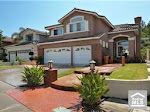Spring is traditionally the best time to put your house on the market, but when exactly? It’s changed: These days it’s May, while back in 2011 and 2012 it was March. The shift to later in the spring stems from the housing crash’s continued aftershocks.
Small wonder spring is the peak season for residential
real estate sales: The weather is warmer and the kids are out of school, so people who plan to move find it easiest then – and they'll be relocated before the next school year starts. The housing industry has been through extreme gyrations over the past 10 years, but one constant remains: The end of winter still marks the start of the selling season.
Another standard motif is that Thursday is the best day to list because buyers are planning ahead for the weekend, says real estate company Redfin. The worst days: Saturday, Sunday and Monday. Trouble is, only 18% of sellers list on Thursday, to their detriment.
Beyond doubt, the housing landscape has changed. A big reason that May now is the optimal month to list in most states: There are 9% fewer homes on the market during the current spring buying season versus a year ago, according to Zillow, the online housing database firm. This inventory reduction has spurred more buyer competition, and pushed the ideal listing time later, as sellers no longer need to worry as much about unloading their places at a good price.
Broad Economic Factors in Home Selling
The slump in housing supply is a lingering ill effect of the
housing bubble’s bursting. During the boom that preceded the crash, obtaining
mortgages was easy and a lot of poor loans were made. The
Federal Reserve helped by keeping interest rates low. The collapse, of course, produced a sharp downturn in new home construction, which has contributed to the lack of inventory.
Several other factors, growing out of the crisis, hold down the number of houses for sale. Large numbers of single-family homes, for instance, are still worth less than their gargantuan mortgages, taken out when times were flush and prices were far higher. That makes the homes’ owners reluctant to put out the for-sale sign.
Further, huge numbers of houses have been converted to rental units, as
hedge funds,
real estate investment trusts and individual investors bought them at distressed prices. That removes another big chunk of housing stock from the market.
Why Spring Is Peak Selling Season
Aside from the end of school and generally nicer weather for home shopping, spring still reigns supreme because houses look better and the days are longer, the
National Association of Realtors says.
With the economy’s gradual recovery, qualified buyers have the money to compete for what they want. Thus,
bidding wars are more likely to erupt, which pushes up prices. Plus, increased sales make for a self-reinforcing dynamic: When comparable houses in a neighborhood fetch higher prices than in the past, your own dwelling’s value is buoyed.
In the off-season, by contrast, low-ball offers tend to be the norm. In more northern climes,
curb appeal wanes amid bare trees and brown lawns.
Differences Based on Geography
Prices on properties vary depending on locale. In the main, a study by real estate site Trulia found, the farther north you go, the later the prices peak. They hit the max in the South in March and April, except for Florida, which crests in May. The Florida high point may be linked to the large numbers of winter residents who take their sweet time going back north.
Certainly, planning for when to list occurs in advance of the actual listing. One report found that, according to brokers, buyers in Chicago and Boston were not deterred by cold weather as much as sellers, who control when to list. The sellers did not want to begin home repairs and other attempts to spiff up their domiciles when cold winds blew. Hence, they often list later in the spring. (For ideas on improvements you might make, see
Do-It-Yourself Projects to Boost Home Value.)
Why Thursday Is the Best Day to List
By Redfin’s reckoning, a
Thursday listing means a home is more apt to sell faster and above
list price than one listed on any other day of the week. By
Thursday, with the weekend looming, potential buyers are picking over what houses they want to see. Come the weekend, the planning phase is over and the legions of homebuyers are already fanning out.
How to Maximize Selling Points
To be sure, regardless of the season, any home that looks rundown will have a tough time getting any offers, let alone good ones. While opinions differ on when exactly is best to list your property, no one disputes that fixing it up will enhance sales appeal. There are professionals who advise you about “staging” your home for buyers, with the right placement of furniture, removal of clutter and adding esthetic touches like scented candles. (See also
6 Tips for Selling Your Home Fast.)
But you can also upgrade the house’s look with do-it-yourself remodeling moves like painting the front porch, putting new knobs on kitchen and bathroom drawers, and getting better lighting fixtures for the foyer. For more ideas, read
How to Stage Your Home for a Quick Sale.
The Bottom Line
Home sales, despite some ups and downs, are inching back up. If you wish to sell your house, in most states, no month is better than May and no day is better than Thursday. With competition heating up in many markets, getting a decent deal for your home is definitely possible. Getting the best possible price takes planning and strategic updating if needed. Consult your realtor about what makes the most sense for the housing market in your area.











































































































